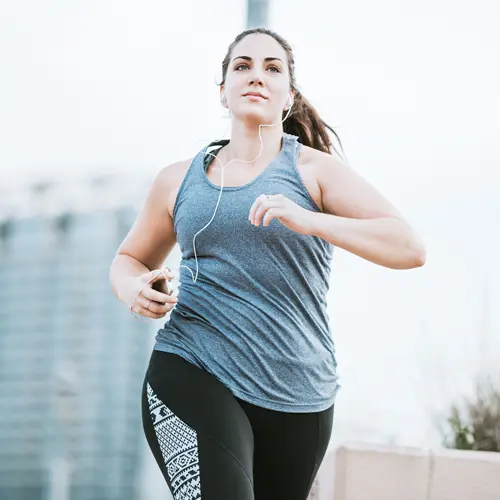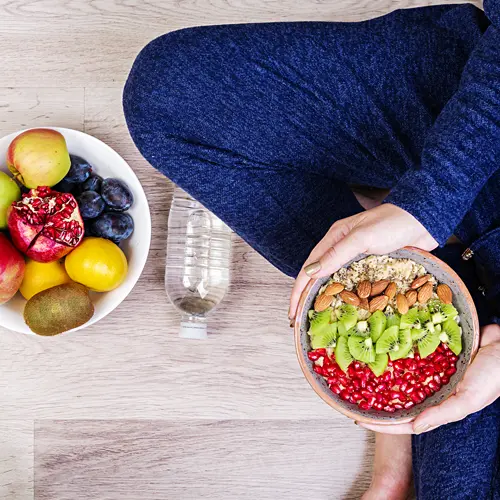Table of Contents
Joint flexibility is key to a healthy, active lifestyle, yet it's often overlooked in regular fitness routines. This article focuses on eight simple yet effective exercises designed to enhance joint flexibility and mobility.
Each exercise is chosen for its ease of execution and minimal requirement of equipment, making them accessible to individuals at all fitness levels.
We cover a range of movements that target various joints, including the shoulders, hips, knees, and ankles.
The exercises are not only beneficial for those looking to improve their overall flexibility but are also particularly helpful for individuals recovering from injuries or dealing with conditions like arthritis.
Alongside each exercise, we provide step-by-step instructions and tips for avoiding common mistakes, ensuring that these movements are performed safely and effectively.
Incorporating these exercises into your daily routine can lead to improved range of motion, reduced joint pain, and enhanced overall physical performance, paving the way for a healthier, more active life.
1. Neck Rolls
Neck rolls are a simple yet effective exercise for improving flexibility and relieving tension in the neck and shoulders. To perform neck rolls:
Start by sitting or standing up straight with your shoulders relaxed.
Slowly tilt your head to one side, bringing your ear towards your shoulder. Hold this position for a few seconds, feeling a gentle stretch along the opposite side of your neck.
Roll your head forward, allowing your chin to move towards your chest. Hold this position for a moment.
Continue the circular motion by tilting your head to the opposite side, bringing your ear towards your other shoulder. Hold for a few seconds.
Finally, roll your head backwards, gently lifting your chin towards the ceiling. Hold briefly.
Complete the circle by returning to the starting position and repeat the movement in the opposite direction.
Repeat this sequence of neck rolls for several repetitions, moving slowly and smoothly to avoid any strain. Be mindful not to force your neck into any uncomfortable positions, and only move within a comfortable range of motion. This exercise can help increase flexibility in the neck, improve circulation, and reduce stiffness.
2. Shoulder Rolls
Shoulder rolls are an excellent exercise for improving flexibility and mobility in the shoulders. Here's how to perform shoulder rolls:
Stand up straight with your feet shoulder-width apart or sit comfortably in a chair with your back straight.
Relax your arms by your sides, letting them hang loosely.
Inhale deeply and lift your shoulders up towards your ears as high as you comfortably can. Hold this position for a moment.
Exhale slowly and roll your shoulders back in a circular motion, squeezing your shoulder blades together as you roll them down and back.
Continue the circular motion, bringing your shoulders forward and then up towards your ears again.
Repeat this rolling motion for several repetitions, moving your shoulders in a smooth and controlled manner.
After completing several repetitions in one direction, switch and perform the shoulder rolls in the opposite direction.
Be sure to keep your movements slow and controlled, focusing on the full range of motion in your shoulders. Avoid shrugging your shoulders excessively or tensing up your neck muscles. Shoulder rolls can help release tension, improve circulation, and enhance flexibility in the shoulder joints.
3. Arm Circles
Arm circles are a simple yet effective exercise for improving joint flexibility and mobility in the shoulders. Here's how to perform arm circles:
Stand up straight with your feet shoulder-width apart or sit comfortably in a chair with your back straight.
Extend your arms out to your sides, parallel to the floor, with your palms facing down.
Start making small circles with your arms, rotating them forward in a controlled motion.
Gradually increase the size of the circles as you feel more comfortable and your shoulders loosen up.
Continue circling your arms forward for several repetitions, maintaining a smooth and controlled motion.
After completing several forward circles, reverse the motion and begin circling your arms backward.
Again, start with small circles and gradually increase their size as you continue the motion.
Perform several repetitions of backward arm circles, focusing on maintaining proper form and control.
Be mindful to keep your shoulders relaxed and avoid shrugging them up towards your ears. Focus on engaging the muscles around your shoulder joints to create smooth and controlled movements throughout the exercise. Arm circles can help increase shoulder flexibility, improve circulation, and reduce stiffness in the shoulders and upper arms.
4. Wrist Flexion and Extension
Wrist flexion and extension exercises are great for improving flexibility and mobility in the wrists. Here's how to perform them:
Start by sitting comfortably in a chair or standing with your feet shoulder-width apart.
Extend your arms out in front of you at shoulder height, palms facing down.
Begin with wrist flexion: Slowly bend your wrists downward, pointing your fingers towards the floor. Hold this position for a few seconds, feeling a gentle stretch in the top of your wrists and forearm.
Return to the starting position with your palms facing down.
Next, perform wrist extension: Slowly bend your wrists upward, pointing your fingers towards the ceiling. Hold this position for a few seconds, feeling a stretch in the underside of your wrists and forearm.
Return to the starting position with your palms facing down.
Repeat the flexion and extension movements for several repetitions, moving slowly and smoothly.
To increase the stretch, you can gently apply pressure with your opposite hand to deepen the stretch during wrist flexion and extension.
Remember to breathe deeply and relax your shoulders throughout the exercise.
Performing wrist flexion and extension exercises regularly can help improve wrist flexibility, reduce stiffness, and prevent injuries. These exercises are particularly beneficial for individuals who spend a lot of time typing, writing, or performing activities that require repetitive wrist movements.
5. Hip Circles
Hip circles are a fantastic exercise for improving flexibility and mobility in the hip joints. Here's how to perform hip circles:
Stand up straight with your feet shoulder-width apart.
Place your hands on your hips or let them hang loosely by your sides for balance.
Begin by gently shifting your hips forward, pushing them slightly to one side.
Continue the circular motion by moving your hips to the side, then back, and finally to the other side.
As you circle your hips, imagine drawing a circle with your hip bones.
Focus on making smooth and controlled movements, using your core muscles to stabilize your pelvis.
After completing several circles in one direction, switch and perform circles in the opposite direction.
Repeat the hip circles for several repetitions, moving at a comfortable pace.
Be sure to keep your upper body relaxed and avoid tensing up your shoulders or neck. Focus on engaging the muscles around your hips and pelvis to create fluid and controlled movements throughout the exercise. Hip circles can help improve hip mobility, increase flexibility, and alleviate stiffness in the hip joints.
6. Knee Bends
Knee bends, also known as squats, are excellent exercises for improving joint flexibility in the knees, strengthening the quadriceps, hamstrings, and glutes, and enhancing overall lower body strength. Here's how to perform knee bends properly:
Stand with your feet shoulder-width apart, toes pointing slightly outward.
Engage your core muscles to maintain a stable posture throughout the exercise.
Extend your arms straight out in front of you or place your hands on your hips for balance.
Lower your body by bending your knees and pushing your hips back as if you are sitting back into a chair. Keep your chest lifted and your back straight.
Continue lowering your body until your thighs are parallel to the floor, or as far as you can comfortably go without compromising form.
Ensure that your knees stay aligned with your toes and do not extend beyond your toes.
Pause briefly at the bottom of the squat, then press through your heels to return to the starting position, straightening your legs and squeezing your glutes at the top.
Repeat the movement for several repetitions, aiming for a controlled and smooth motion.
Here are some tips to perform knee bends safely and effectively:
Start with a shallow range of motion if you're a beginner or if you have any knee issues.
Keep your weight balanced evenly between both feet throughout the exercise.
Avoid allowing your knees to collapse inward or outward; keep them aligned with your toes.
Focus on maintaining proper form and control rather than depth. Only squat as low as you can while maintaining good form.
Breathe steadily throughout the movement, inhaling as you lower your body and exhaling as you return to the starting position.
Gradually increase the depth and intensity of your knee bends as your strength and flexibility improve over time.
7. Ankle Circles
Ankle circles are a simple yet effective exercise for improving flexibility and mobility in the ankle joints. Here's how to perform ankle circles:
Sit comfortably on the floor or on a chair with your feet flat on the ground.
Extend one leg out in front of you while keeping the other foot firmly planted on the floor.
Slowly rotate your extended ankle in a circular motion, moving your foot clockwise.
Focus on making the circles as large as possible while maintaining a controlled movement.
After several rotations in one direction, reverse the motion and circle your ankle counterclockwise.
Perform the same circular motion with the other ankle, alternating between clockwise and counterclockwise rotations.
Here are some tips for performing ankle circles effectively:
Keep your movements slow and controlled to avoid any strain on the ankle joint.
Focus on using your ankle muscles to create the circular motion rather than relying solely on momentum.
Try to achieve a full range of motion by pointing your toes as far away from you as possible during each rotation.
If you feel any discomfort or pain during the exercise, stop immediately and consult with a healthcare professional.
Ankle circles can help increase ankle flexibility, reduce stiffness, and improve overall joint health. They are particularly beneficial for individuals who spend long periods sitting or standing, as well as athletes who engage in activities that require ankle mobility, such as running, jumping, and dancing.
8. Spinal Twists
Spinal twists are excellent exercises for improving flexibility and mobility in the spine, promoting better posture, and relieving tension in the back muscles. Here's how to perform spinal twists:
Sit on the floor with your legs extended in front of you or sit on a chair with your feet flat on the ground.
Keep your spine tall and straight, engaging your core muscles for stability.
Bend your right knee and place your right foot flat on the floor, crossing it over your left leg.
Place your left hand on the outside of your right knee or thigh for support.
Inhale deeply and lengthen your spine, lifting your right arm up towards the ceiling.
Exhale slowly and twist your torso to the right, bringing your right arm across your body and placing your right hand on the floor behind you.
Use your left hand to gently press against your right knee, helping to deepen the twist.
Turn your head to look over your right shoulder, keeping your chin in line with your chest.
Hold the twist for a few deep breaths, feeling a gentle stretch along the spine and through the torso.
To release the twist, slowly unwind your torso and return to the starting position.
Repeat the spinal twist on the other side by bending your left knee and twisting to the left.
Here are some additional tips for performing spinal twists safely and effectively:
Focus on lengthening your spine with each inhale and deepening the twist with each exhale.
Avoid forcing your body into the twist; instead, move gradually and only as far as feels comfortable.
Keep your hips grounded and both sit bones evenly planted on the floor or chair throughout the twist.
If sitting on the floor is uncomfortable, you can perform spinal twists while seated on a yoga block or cushion for added support.
Regular practice of spinal twists can help improve spinal flexibility, alleviate back pain, and promote overall spinal health. They are particularly beneficial for individuals who spend long hours sitting or standing, as well as those with sedentary lifestyles or desk jobs.
FAQ
What are some basic exercises to improve joint flexibility?
A great starting point for enhancing joint flexibility is to engage in stretching exercises. These can include hamstring stretches, where you reach toward your toes while sitting or standing, and shoulder stretches, such as bringing your arm across your body and holding it with the other arm. Yoga and Pilates are also excellent for improving flexibility, offering poses and movements that gently increase the range of motion in various joints.
How often should I perform flexibility exercises?
Consistency is key for improving flexibility. Aim to perform flexibility exercises at least 3 to 5 times a week. Incorporating them into your daily routine can be very effective. Remember, it's important to listen to your body and not overdo it, especially in the beginning.
Is it normal to feel discomfort when starting flexibility exercises?
Mild discomfort is normal when you start a new exercise regimen, as your muscles and joints are adjusting to new movements. However, pain is not normal. If you experience pain, you should stop the exercise and consult a healthcare professional. It's essential to differentiate between the natural feeling of stretching and pain, which could indicate an injury or strain.
Can flexibility exercises help with joint pain?
Yes, in many cases, exercises aimed at improving flexibility can help alleviate joint pain. They do this by enhancing the range of motion, reducing stiffness, and improving blood flow to the joint areas. However, if your joint pain is severe or chronic, it's crucial to consult a healthcare professional before starting any new exercise regimen.
What is the best time of day to do flexibility exercises?
Flexibility exercises can be done at any time of day. However, some people prefer to do them in the morning as it helps to loosen up stiff joints and muscles after sleep. Others find it beneficial to do these exercises in the evening as a way to relax and unwind. Listen to your body and choose a time that works best for you.
How long should I hold each stretch for optimal benefits?
Generally, holding a stretch for about 15 to 30 seconds is recommended for most people. This duration allows the muscle to relax and stretch without causing strain. It's also beneficial to repeat each stretch two to three times, ensuring that the muscle is being adequately stretched.
Can flexibility exercises improve my overall physical fitness?
Absolutely. Flexibility exercises are a crucial component of overall physical fitness. They complement strength and aerobic training by improving the range of motion, which can enhance performance in other types of exercises and reduce the risk of injuries.
Are there any specific exercises for improving the flexibility of the spine?
Yes, exercises like cat-cow stretches, where you arch and then round your back while on all fours, and gentle spinal twists can be particularly beneficial for spinal flexibility. These exercises help in loosening up the vertebrae and muscles around the spine, promoting better movement and flexibility.




















